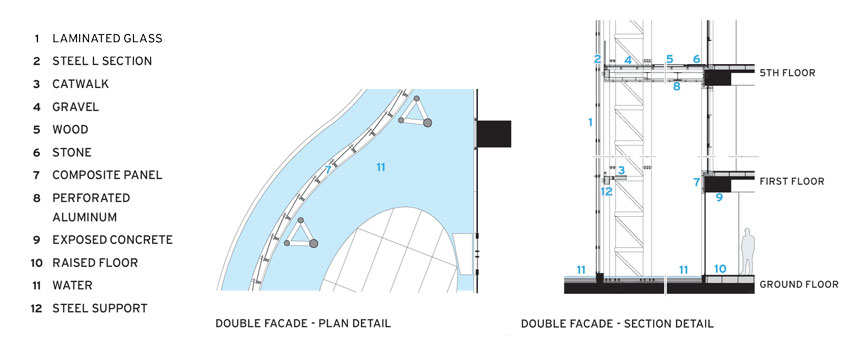Tall Buildings
The Ripple Effect
Concealing a straightforward office tower within, a curvilinear exterior commands attention.
By Shonquis Moreno
Turkey’s recent boom economy, though now bust, is manifest in Maslak, Istanbul’s business district. Office blocks, malls, and high-rent residential towers, arising haphazardly, have formed a skyline with little coherence. In the absence of urban planning, Turkish corporations have vied to embody their power and prestige in buildings, forming a mismatched, chest-beating architectural tribe. There is one office tower in the area, however, whose voluptuous, textured silhouette stands out against the hard, glossy grids and erratic geometries. Designed by Emre Arolat Architecture, Maslak Tower No. 1 is named for its street address. It occupies an irregular site—at the confluence of two busy boulevards, limited by local code to a footprint of only 7,535 square feet and 20 stories (280 feet) high—while surrounding towers rise to about 50 stories.

ALL PHOTOGRAPHY BY THOMAS MAYER
MIESIAN DREAMS
Maslak Tower No. 1 | Istanbul | Emre Arolat Architecture
Mies van der Rohe’s early, unbuilt skyscraper designs, including his curvilinear one of 1922, continue to influence architects today. The 20-story Maslak Tower No. 1 in Istanbul (right) renders the modernist prototype in fritted and clear glass. Its biomorphic outer wall is connected to the interior concrete-and-glass curtain wall structure by an exoskeleton of steel and curving beams (left).
“The client was looking for an extravaganza, something distinct from the others,” Arolat says, “but the business partners didn’t have a site on which it was possible to do a grandiose or powerful-looking building. I told them that it’s not easy, when everyone is shouting, to make yourself heard. To distinguish oneself, it’s better to be very, very quiet.” It turned out that, although regulations restricted the building’s floor area, there was no limitation on the volume of the building. “We realized that if we created a void inside, it wouldn’t count in the regulation’s numbers,” explains Arolat’s partner, Gonca Paşolar, “but the building would look much bigger than it really was.”
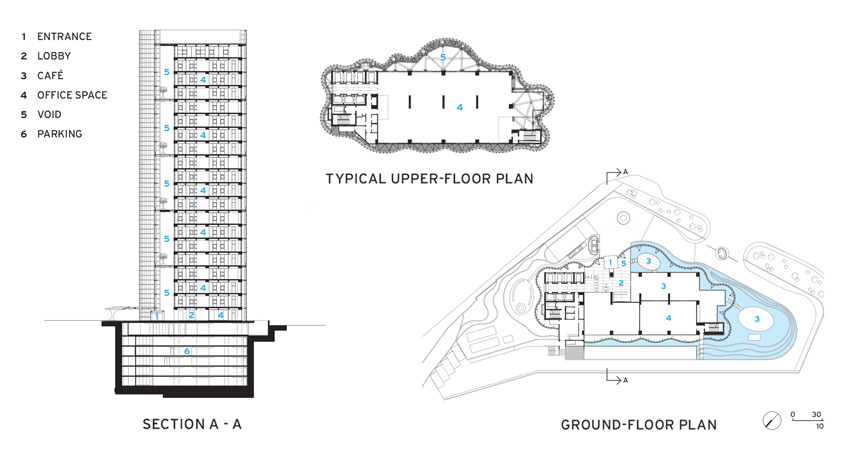
The architects decided to build a rather ordinary, inexpensive, reinforced-concrete building with a double-glazed curtain wall inside an outer, strikingly unique, curvilinear facade. This facade would have overlapping laminated, fritted, and clear glass panels. Its undulating exterior wall stands apart from the basic inner box for office space, so that an airy void is created between the two. This peripheral interior space contains 66-foot-high vertical gardens facing southeast with planters on every fourth floor, and metal grate walkways on the north, which can be accessed by the occupants. The void has its own natural microclimate: it is warmer in winter and cooler in summer, providing ventilation and lower energy consumption while filtering light, cutting street noise by 70 percent, and shielding the offices from wind and dust.
The biomorphic facade hides an explicitly industrial exoskeleton that anchors the outer skin to the inner structure. The architects left these columns and curving beams exposed within the cavity to preserve sight lines from the ground to the roof.
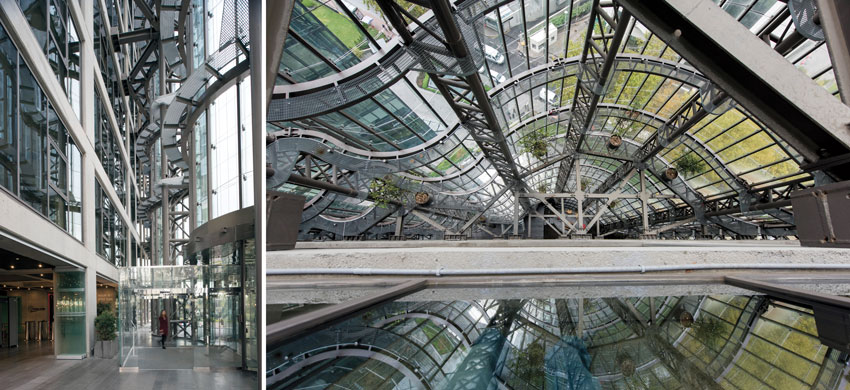
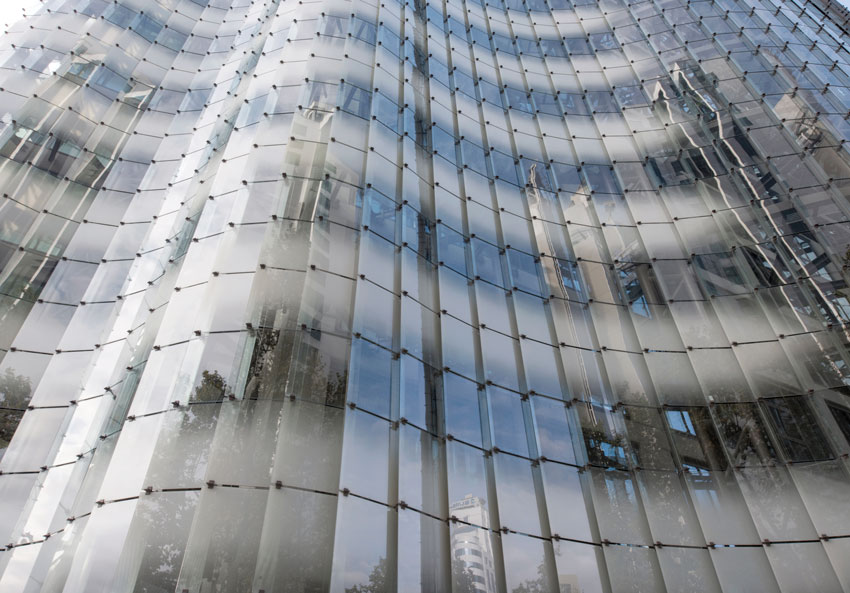
WITHIN THE WHORL
The exterior facade’s overlapping fish scale–like cladding covers the curvilinear facade (bottom). Spaces between the fins allow air to enter the void located between the outer skin and the interior concrete structure (top, right). At the ground level, the void between the exterior and interior enclosures provides space for the entrance lobby (top, left).
The building’s spatter-shaped plan consists of 12 folds or extrusions from the face of the building that generate a variety of views in and out. “There are very fast roads around the building,” Arolat says, “so when you see it, it always appears at a different angle and in a different color or light.”
Security is a priority in Istanbul, where political coups, shootings, and bombings occur, and new sections of the city are characterized by gated communities. One of the resulting failings of Maslak’s neighborhood is its lack of public or green space. Access, controlled by guards and X-ray monitors, is limited to employees, which makes the ground floor of most towers impermeable. To mix security and porosity, exclusivity and inclusivity, Arolat designed indoor and outdoor spaces for a café (called Prototype No. 1) at street level. Only employees can enter upper floors—there are no floor-selection buttons in the elevators because staff IDs admit them only to the levels they work on—but the eatery is open to any passerby.
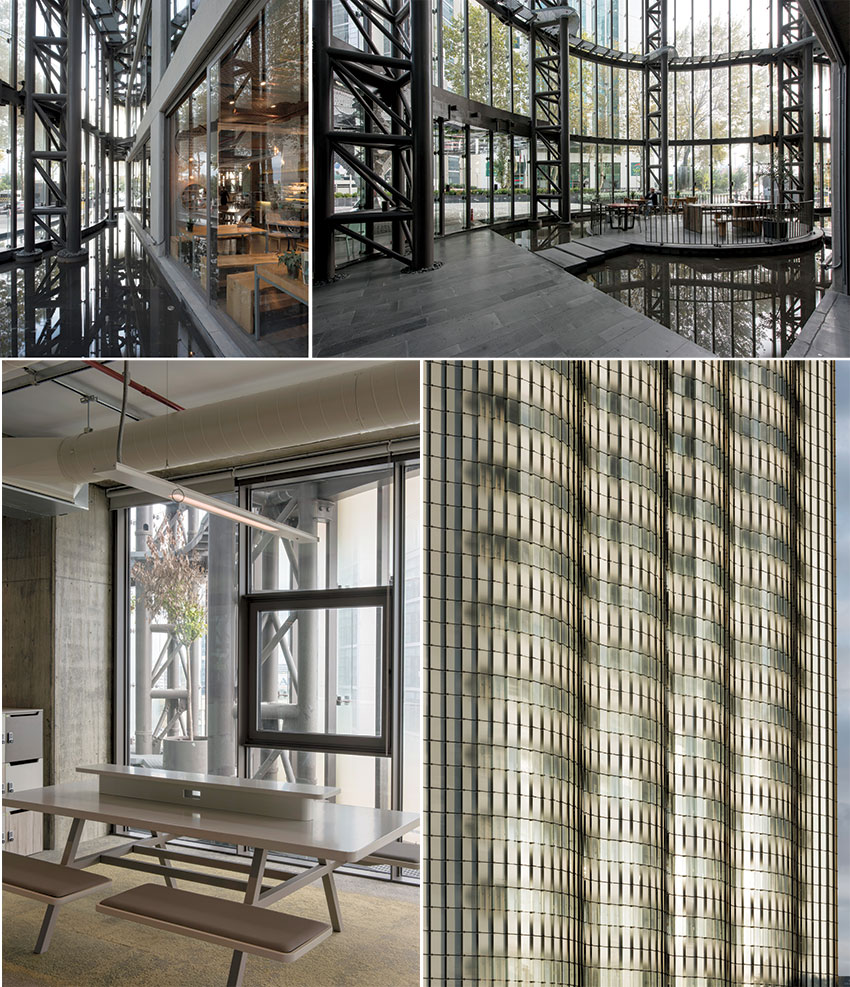
LAYERED LOOK
The offices within the concrete-and-glass inner structure open into the void (top, left). This space also allows for a café off the lobby (top, right). Offices are fitted with operable windows for natural ventilation (bottom, left). The interior is not revealed on the outside (bottom, right), which is enclosed with fritted and transparent glass.
And that, not coincidentally, is where the void begins. Those sitting on the café’s island-like inner terrace, surrounded by a shallow pool of water and its reflections, can look up through the building’s industrial filigree and feel the sun filtering through onto their faces. Not far from security, it is a manifestly peaceful space.
Shonquis Moreno is a design and architecture journalist based in Istanbul, San Francisco, and Brooklyn, New York.
Credits
Architect: Emre Arolat Architecture — Deniz Kösemen
Engineers: Altineller Engineering (structural); Tanriöver Engineering (mechanical); Aykar Engineering (electrical)
Consultants: Marka (landscape)
General Contractor: Alsar Reic
Client: Alsar Reic, Koçkaya Holding Company
Size: 312,000 square feet
Cost: $20 million
Completion Date: August 2014
Sources
Masonry: Nuh Yapi
Metal Panels and Rainscreen: Erbay Aluminum
Metal Frame: Erbay Aluminum, Schüco
Glass: Trayka
Entrances and Hardware: Dorma
Elevators: Otis
Plumbing: VitrA





